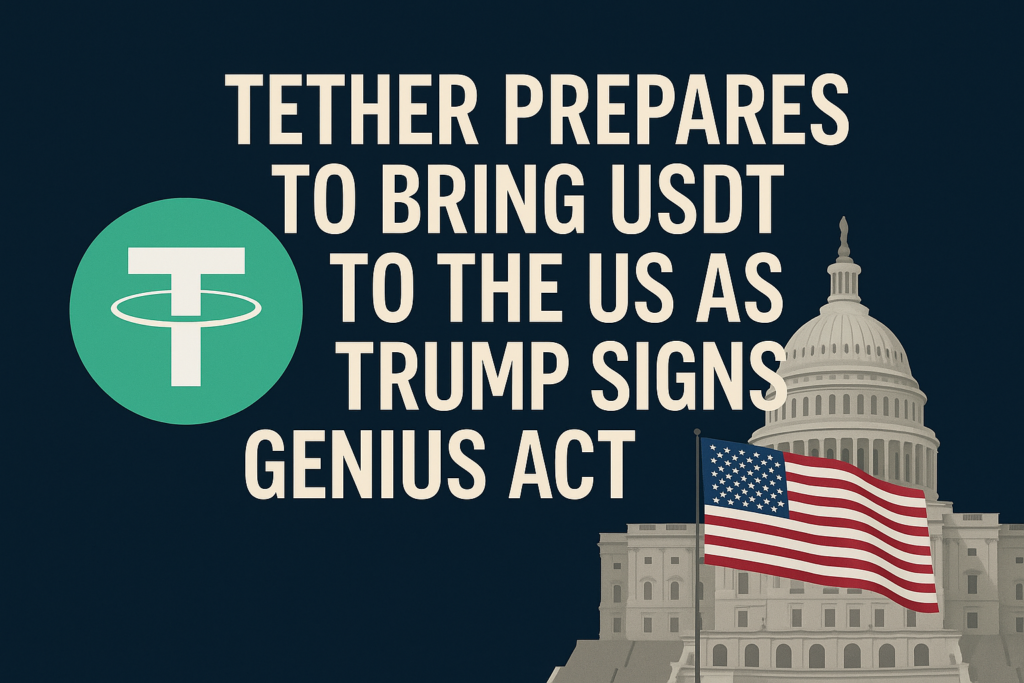In a landmark move for the crypto industry, stablecoin issuer Tether has announced plans to bring USDT — the world’s largest stablecoin — to the U.S. market. The announcement came shortly after U.S. President Donald Trump officially signed the GENIUS Act into law, signaling a major regulatory shift in favor of digital assets.
A New Path for Stablecoins
Tether plans to use a foreign issuer pathway to introduce USDT to the U.S. This strategy allows the company to navigate remaining regulatory uncertainty while aligning with the new legal framework introduced by the GENIUS Act.
The GENIUS Act, along with the accompanying CLARITY Act and the anti-CBDC (Central Bank Digital Currency) law, represents one of the most pro-crypto packages ever passed by the U.S. Congress. It provides clearer definitions for digital assets, separates stablecoins from securities, and opens the door for responsible innovation in the financial sector.
Why It Matters
With over $110 billion in circulation, USDT is already a key pillar of global crypto trading. Its potential entry into the U.S. market could:
- Increase liquidity across U.S.-based crypto exchanges
- Push mainstream adoption of digital dollars
- Put pressure on traditional banks to explore tokenized alternatives
“This is a significant step forward,” said a Tether spokesperson. “We’re eager to work within the new framework and offer U.S. customers a secure, compliant stablecoin option.”
What’s Next?
Tether has not released an official launch date but stated that further updates will follow in coordination with legal advisors and regulators. Industry analysts predict a late Q3 rollout, potentially coinciding with other legislative milestones.
As the U.S. takes its place in the global digital asset race, Tether’s expansion may serve as a bellwether for other international stablecoin providers eyeing the American market.







